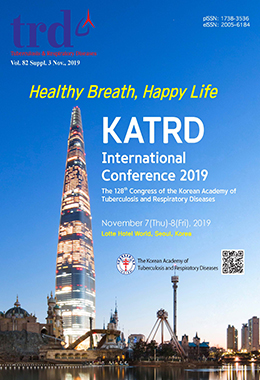Introduction: Inhaled corticosteroids (ICS) use has increased substantially in the last decade. About 50% of chronic obstructive pulmonary disease (COPD) patients eventually progress to receive triple therapy including ICS within three years of initial diagnosis, resulting in overuse of inhaled corticosteroid (ICS) in real world practice. With recent introduction of dual bronchodilators, this study aimed to investigate the duration of dual bronchodilator therapy maintenance without adding ICS and to explore factors affecting the addition of ICS. Methods: This is a retrospective cohort study at single referral hospital. COPD was defined as post-bronchodilator forced expiratory volume in 1 second (FEV1)/ forced vital capacity (FVC) < 0.7 and age ≥ 40 years. Between January 2015 and December 2018, consecutive patients who have ever used dual bronchodilator therapy were included in this study. Primary outcome was addition of ICS, regardless of the reason. Results: Among 299 patients who received dual bronchodilator, 236 (78.9%) patients maintained bronchodilator therapy without adding ICS during median follow-up of 12.1 (5.6 - 21.3) months. In univariate analysis, previous history of ICS use [HR, 2.04; 95% CI, 1.23 - 3.36], mMRC dyspnea grade ≥ 2 [HR, 2.27; 95% CI, 1.37 - 3.76], and COPD assessment test score ≥ 10 [HR, 1.94; 95% CI, 1.01- 3.71] were significantly associated with adding ICS to the dual bronchodilator therapy. However, post bronchodilator FEV1 < 50% predicted [HR, 1.61; 95% CI, 0.90 - 2.88] was not associated with adding ICS to the dual bronchodilator therapy. Conclusions: Add-on ICS therapy could be delayed in COPD patients with dual bronchodilator therapy.




